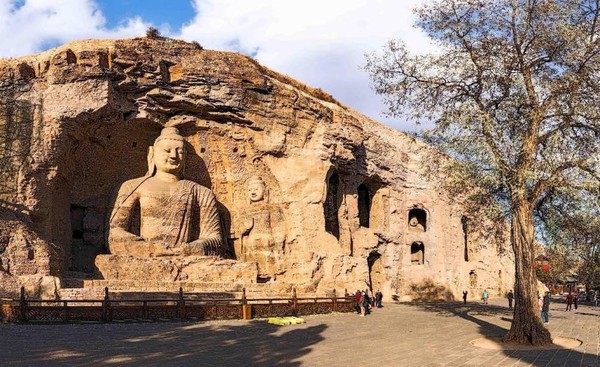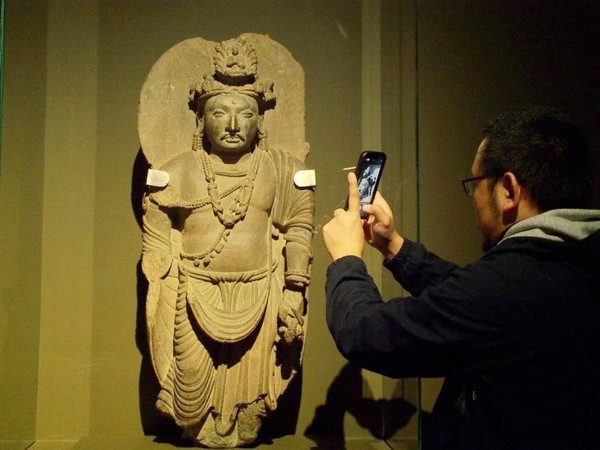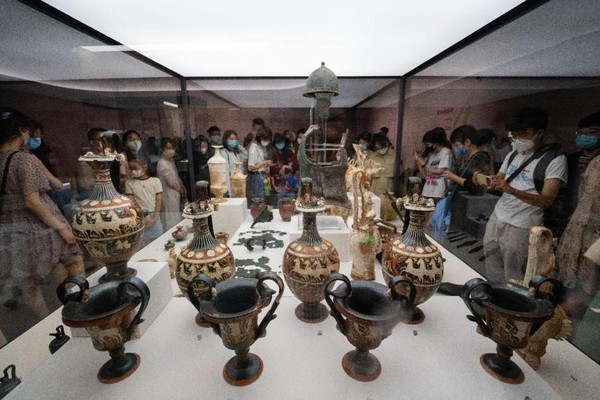By Hang Kan
To protect cultural heritage and pass it down through generations is a shared responsibility of mankind. So far, the number of world heritage sites in China has grown to 56, including the Great Wall and the Summer Palace in Beijing, the Mogao Grottoes in Dunhuang, northwest China's Gansu province, the Yungang Grottoes in north China's Shanxi province and Fujian Tulou, a type of Chinese rural dwellings of the Hakka people in the mountainous areas in southeast China's Fujian province that dates back to Song and Yuan dynasties.
Diversity of human civilizations not only defines the world, but also drives progress of mankind. Over 2,000 years ago, ancient Chinese came to realize that "things are born to be different." The prosperity of civilization and human progress will not be possible without enhancing common ground and reserving differences. It is the interaction among different civilizations that promotes human progress and prosperity.

The Yungang Grottoes is a great example of Chinese-foreign cultural communication. For instance, in its Cave 18, one of the five earliest excavated caves with huge Buddha images, there is a Buddha statue on the north wall featuring Caucasian appearance. However, there's no document proving the Yungang Grottoes' excavation was joined by European artisans. This exactly mirrors the communication between China and foreign countries in ancient China.
Besides, various decorative patterns of both Chinese and foreign features are seen in the caves of the Yungang Grottoes, and some columns there obviously carry the characteristics of foreign cultures, such as the Ionic order from ancient Greece as well as other classic orders from Persia and India.

Inter-civilization interaction promotes technological exchanges. It has been influencing the world since ancient times.
For instance, porcelains went from ancient China to the rest of the world, and the technologies for making porcelains are still upgrading today. High-tech porcelains made from rare earths, mixed with metallic element, or made with various firing techniques can be used in biomedical fields such as manufacturing artificial bones and joints.
It is true with the case of rice planting, too. Rice Terraces in the southern mountainous and hilly areas of China was recognized as a Globally Important Agricultural Heritage System, and the country's hybrid rice technology is benefiting the mankind. So far, Chinese hybrid rice has been planted in 16 African countries, and is printed on banknotes of Madagascar.

Over the recent years, more and more quality exhibitions of cultural relics have been introduced to China, which mirrors the open and broad vision of modern China.
The just-ended Gandhara Heritage along the Silk Road: A Pakistan-China Joint Exhibition held at the Palace Museum, Beijing, attracted a large number of visitors. The Gandhara was a major transportation route on the ancient Silk Road. As an outcome of the collision among Greek, Persian and Indian civilizations, it reflected the creativity and vitality of mutual learning among the civilizations along the ancient Silk Road.
Between 2016 and 2020, China hosted over 300 entry-exit exhibitions of cultural relics. The Treasures of China, East Meets West: The Maritime Silk Road during the 13th - 17th Centuries, and The Splendor of Asia: An Exhibition of Asian Civilizations that was jointly organized by 47 Asian countries as well as Egypt and Greece all demonstrated the mutual learning between China and other civilizations around the world, becoming a "golden signature" of Belt and Road cultural communication.
The conservation of cultural heritage is a shared responsibility of all mankind. The 8.1-magnitude earthquake that hit Nepal in 2015 damaged many cultural heritage sites in the country. Two years later, the Chinese government officially kicked off a foreign aid project to restore the quake-hit Nine-Storeyed Basantapur Palace complex in Kathmandu, the capital of Nepal. It was the first major foreign aid project for cultural heritage conservation launched by China in Nepal.
Today, the cooperation on cultural heritage conservation has grown into an area that sees great potential in inter-civilization exchange and cooperation.
The preservation and restoration of historical sites in Khiva, Uzbekistan, the first cultural heritage conservation project launched by China in Central Asia, was completed in 2019. The project gave the Chinese side an opportunity to study local culture, history and traditional techniques, and brought to Uzbekistan Chinese philosophies, techniques and experiences of cultural heritage protection.
The excavation of the ruins of Nateshwar in the Vikrampura Ancient City, Bangladesh marked the first archeological collaboration between China and a country in the South Asia subcontinent. It has achieved remarkable results. Currently, the two countries are planning to build an archeological park on the site, so as to further explore the value of the ruins and bring more benefits to local communities.
The cooperation on cultural heritage conservation, as long as it conforms to relevant international and local principles and respects the customs of countries and regions concerned, leads to win-win situations.
Currently, China is cooperating with six Belt and Road countries on the conservation of 11 historical sites, up from one country and one historical site. It has also launched 33 joint archeological projects with 17 Belt and Road countries, which all received high evaluation from local governments and people.
Today, protecting cultural heritage and promoting mutual learning among civilizations has gradually become a consensus shared by the international community. However, it is also important to see that the conflicts in human society and the changes of the nature would both damage cultural heritage. To pass cultural heritage down through generations remains a heavy task that calls for continuous efforts.
Chinese people believe that one should value not only one's own culture, but also the cultures of others, and this will contribute to the flourishing of all cultures. It is expected that countries around the world could work together to better inherit fine traditional cultures and respect each other's culture while protecting the diversity of human civilizations, and pursue further development of their own cultures, so as to deepen international cultural exchange and cooperation.
(Hang Kan is the head of the Yungang Grottoes Academy.)

